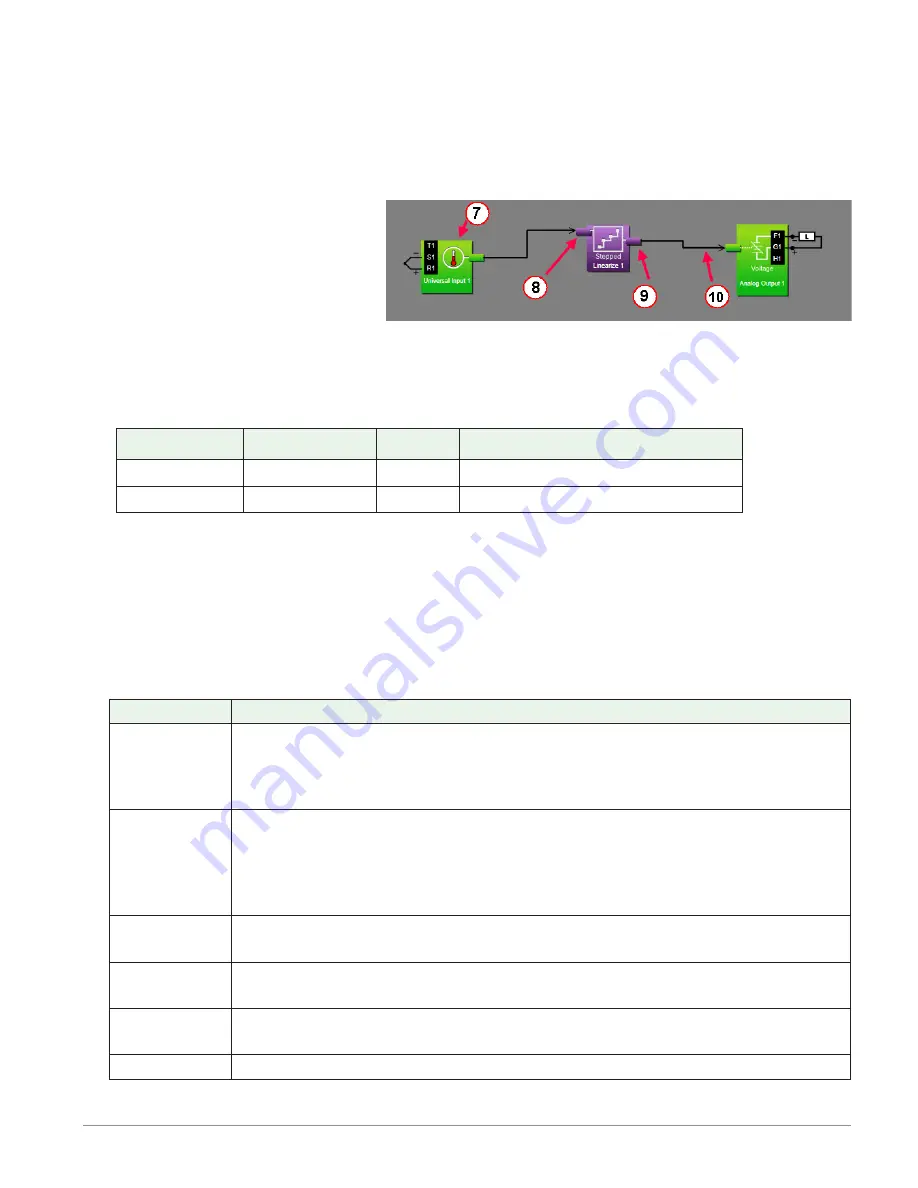
Watlow D4T Data Logger
•
58
•
Chapter 5 Function Reference
D4T Functions Described
The data logger is customized by connecting function blocks (FB) as needed for the applica-
tion. A transmitter of one function is commonly connected to a receiver of another using
Composer's function block diagram editor. The connections between blocks, referred to as sig-
nals, carry information from one function block to another.
Each signal carries three pieces of information:
1. Value
• The value is either analog
(floating point numbers) or
digital (on, off, true or false).
Most function blocks expect
a specific type of value to be
received at each receiver and produce a specific type of value at each transmitter.
Depending on the context, the value of a digital signal may be thought and spoken of
in various terms. The table below lists the various terms that occur in the various con-
texts.
Analog Value
Digital Values
Logic
*Active Signal Parameter Settings
0%
Off
False
Low
100%
On
True
High
* When the state of a digital signal that triggers an action is configurable, the values are
referred to as Active and Inactive and a parameter is provided for choosing which state
triggers the action.
2. Units
• An analog signal can be in units of absolute or relative temperature (Celsius or Fahr-
enheit), percent power or relative humidity. Values may have no units or unspecified
units, indicated as
process
. Digital signals have no units associated with them.
Units
Description
Absolute
Temperature
The value is a temperature on the Celsius or Fahrenheit scale. For example,
33° F as an absolute temperature is one degree above the freezing point
of water. An absolute temperature can be used as a set point or compared
with other temperatures to determine which is hotter or colder
Relative
Temperature
The value is a relative number of degrees, not an absolute temperature.
For example, the difference between the two measured temperatures, 120°
C and 100° C is 20 degrees, but it is not the temperature 20° C. A relative
temperature is appropriate for use as a calibration offset or a deviation
alarm set point
Relative
Humidity
The value is a measurement of percent relative humidity (%RH)
Power
The value is a percentage with 100% representing full power and 0% repre-
senting no power
Process
The value is in units of measure other than degrees Fahrenheit, degrees
Celsius or relative humidity
None
The value is a pure number without units















































